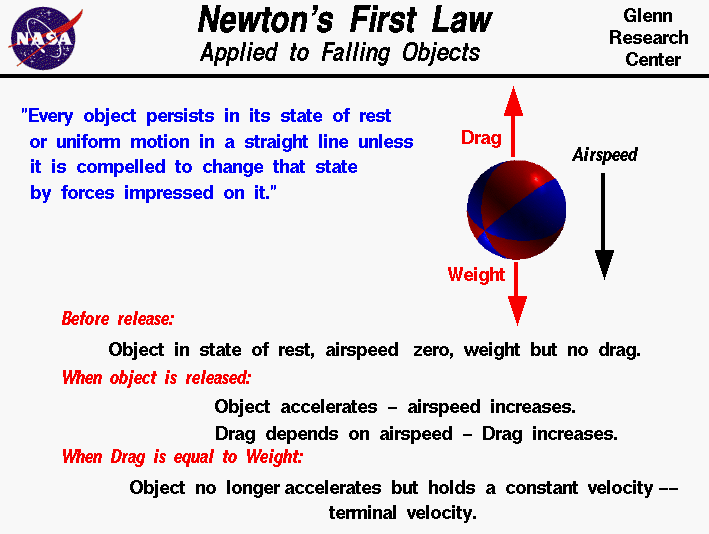
Sir Isaac Newton first presented his three laws
of motion in the "Principia Mathematica Philosophiae Naturalis"
in 1686. His first law states that every object will remain at rest
or in uniform motion in a straight line unless compelled to change
its state by the action of an external force. This is normally taken
as the definition of inertia. The key point here is that if
there is no net force acting on an object
(if all the external forces cancel each other out) then the object
will maintain a constant velocity. If that velocity is zero, then the
object remains at rest. And if an additional external force is
applied, the velocity will change because of the force.
An object falling through the
atmosphere is a good example of this principle. Just prior to^M
release, the velocity of the object is zero, the object is at rest.
The weight force acting on the object is balanced by the tension
force in the rope. There is no net force on the object, and the object wouldremain at rest indefinitely. If the rope is cut, the tension force in
the rope no longer acts on the object; the object is
subjected to a single force, the gravitational
attraction of the earth. Since there is no initial air resistance,
the object begins to free fall and
accelerate. But as the object velocity increases, it encounters air
resistance, or drag, which opposes the
motion. The magnitude of the drag depends on the square of the
velocity. The drag increases until it is equal
to the weight. At that point, there is no net external force on the
object, the acceleration goes to zero, and the body falls at a
constant terminal velocity. The magnitude of
the velocity depends on the relative magnitude of the weight, the
drag coefficient, the air density,
and the size of the object.
Activities:
Guided Tours
-
 Falling Objects:
Falling Objects:

-
 Newton's Laws of Motion:
Newton's Laws of Motion:

Navigation ..

- Beginner's Guide Home Page
|
